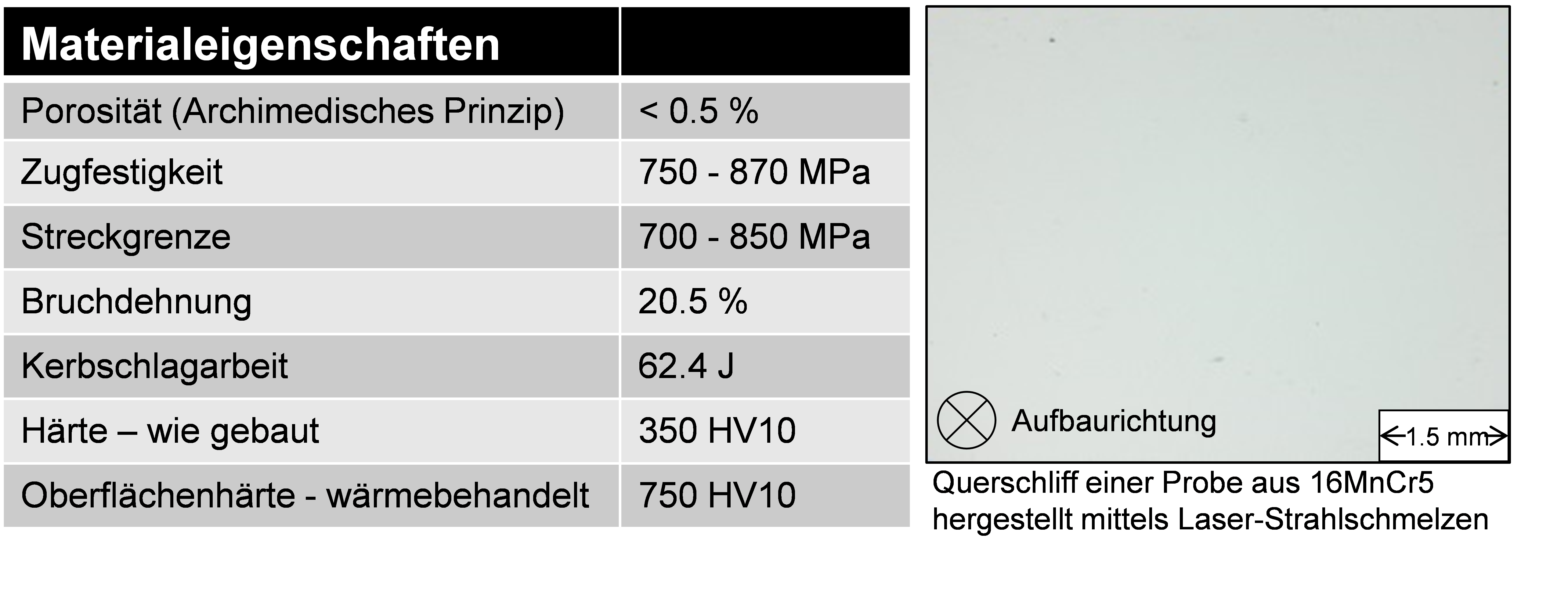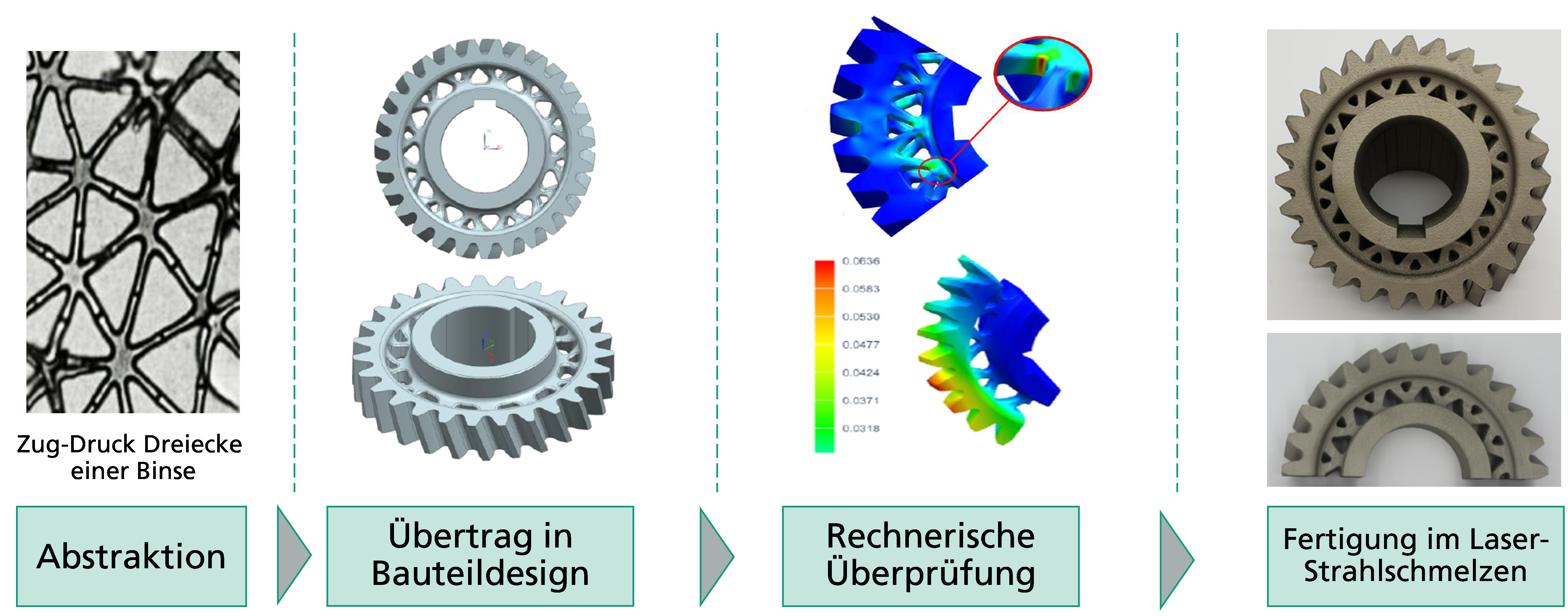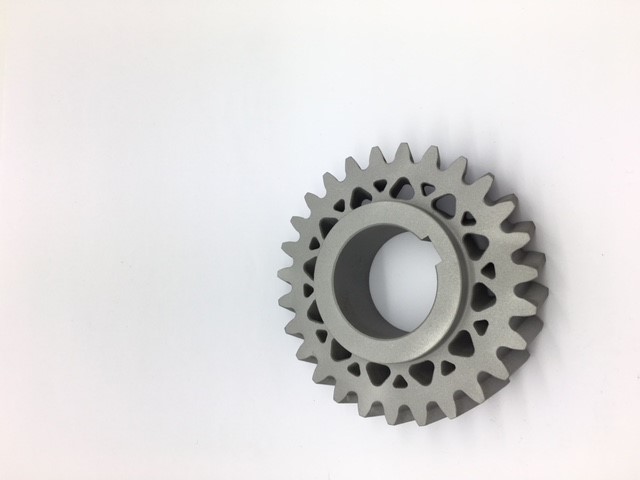Increased resource efficiency through intelligent material development combined with bionic design
Lightweight construction in gear drives offers the possibility of reducing the masses and moments of inertia to be accelerated. This can improve resource efficiency and increase power density. In the present project, the processing of the case hardening steel 16MnCr5 for laser beam melting (LBM) is targeted. In addition, lightweight construction approaches that meet the requirements are developed and the load-bearing capacity of the gears is tested.


